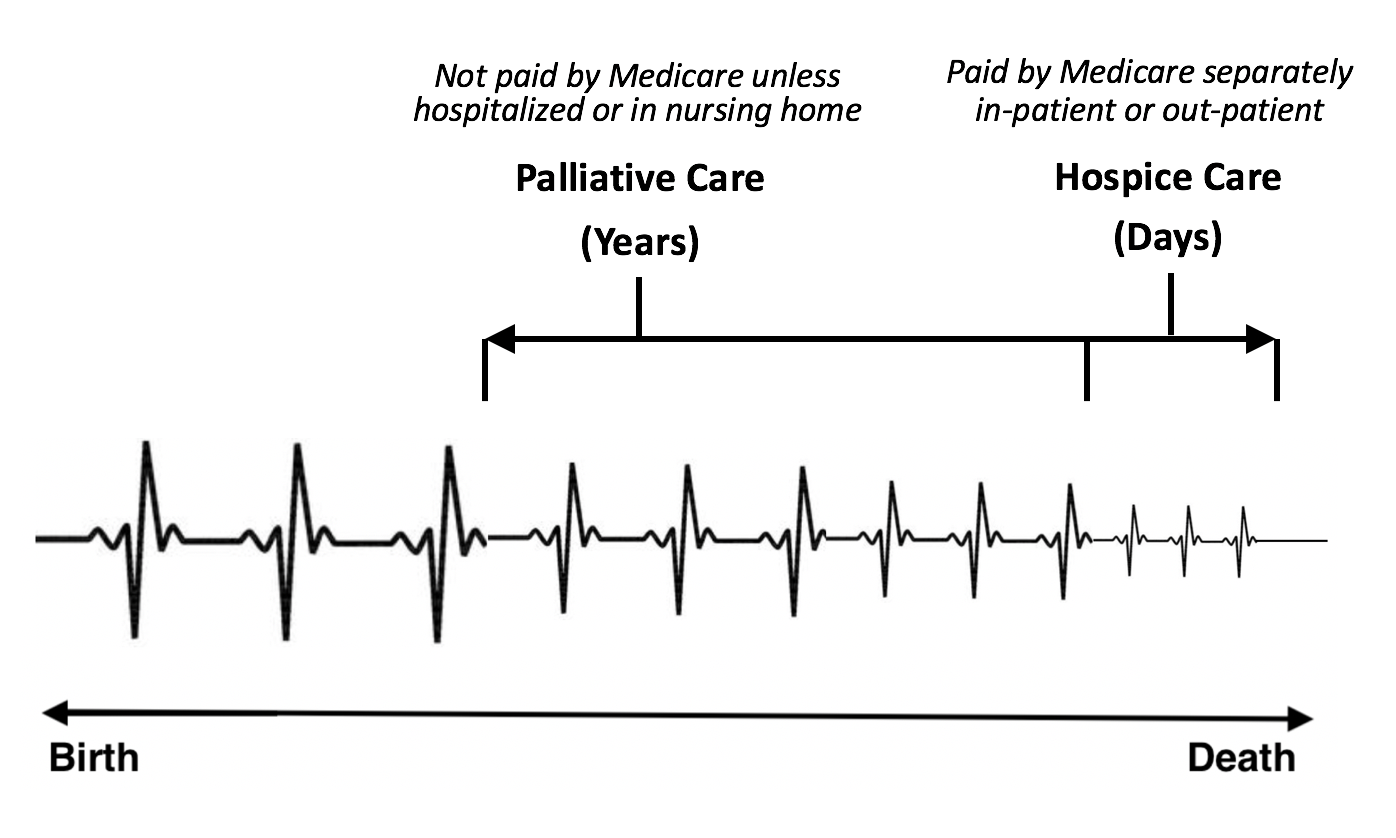(Snippets from the frontline)
Lured into palliative and hospice care
The difference between palliative and hospice care is confusing. (See graph below.)
Palliative care patients selectively choose treatment to avoid excessive surgery or medication adversely affecting quality of life. This decision-making can last for years.
Hospice is an extension of palliative care when a patient is at end-of-life, and actively dying. None of my patients have been on hospice longer than 7 days.
Here’s the catch: Hospice is paid by the Medicare program. Palliative care is not, unless hospitalized or in a nursing home, and definitely not as an out-patient.
More importantly, even though patient coverage remains under Medicare, hospice funds have been legislatively written to be paid separately from this program.
This loophole allows hospital administrators and HMOs to conveniently convert hospitalized patients into hospice, then discharge them terminating their financial obligation and increasing profits.
Patients are lured into palliative care by hospitals and home health agencies with promises of “more services” like nursing, bathing, and feeding at home. But, if you are an out-patient, they immediately convert you to hospice so they can get paid.
So, if you are feeling lured into palliative or hospice care, be careful if you take the bait.
Gene Uzawa Dorio, M.D.
(graph by Amy Chang)

This is a very important issue that warrants elaboration for the uninitiated. Why is palliative care not paid for by Medicare? The implication seems to be that no-holds-barred, unwanted interventions would be covered, but not selected ones. Please clarify this crucial point, or refer readers to sources that can illuminate the issue. Many thanks.